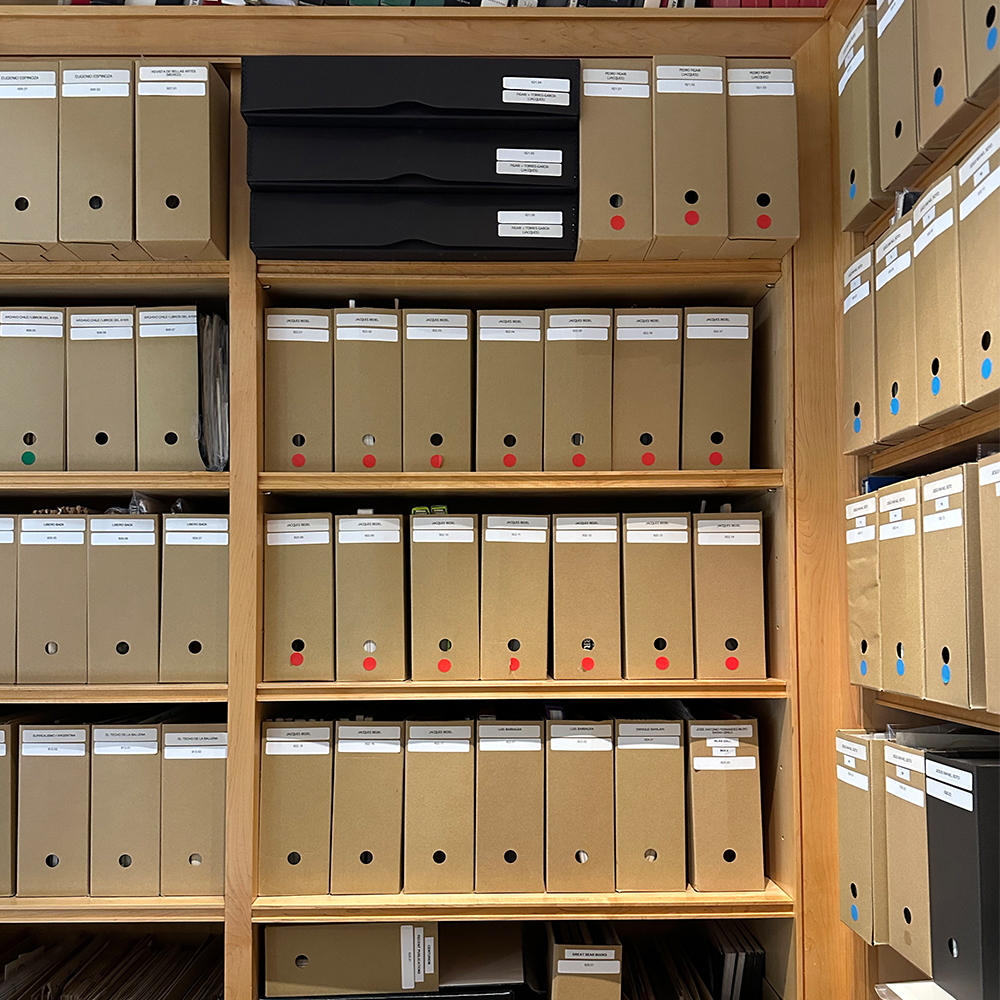Archives

Archives, in many cases, fulfill a triple function by transmitting a historical memory, an institutional memory and the memory of a particular artist’s work. Hence the importance of insisting on the value of safeguarding the archives and that they continue to be nurtured in order to preserve memory.
Sketches, catalogs, invitations, brochures, photographs provide the bibliographic material that allows us to approach the works both in their original context and in their subsequent resignifications. In turn, these documents also act as a prism through which to approach the history of art and politics.
If every archival document contains in itself an “expository power”, those that make up the documentary collections of artists contain it exponentially, since we can think of them and present them in permanent dialogue with the works of their producer.
Working professionally with archives involves sustaining their integrity, describing them and making them accessible to an interested public. This process of appraisal is intended to bring the archive to life, while insisting on the idea that archives not only preserve documents that can be used for history in general, but also to highlight their importance as a reflection of an era and a privileged place of tension between the past and the present.